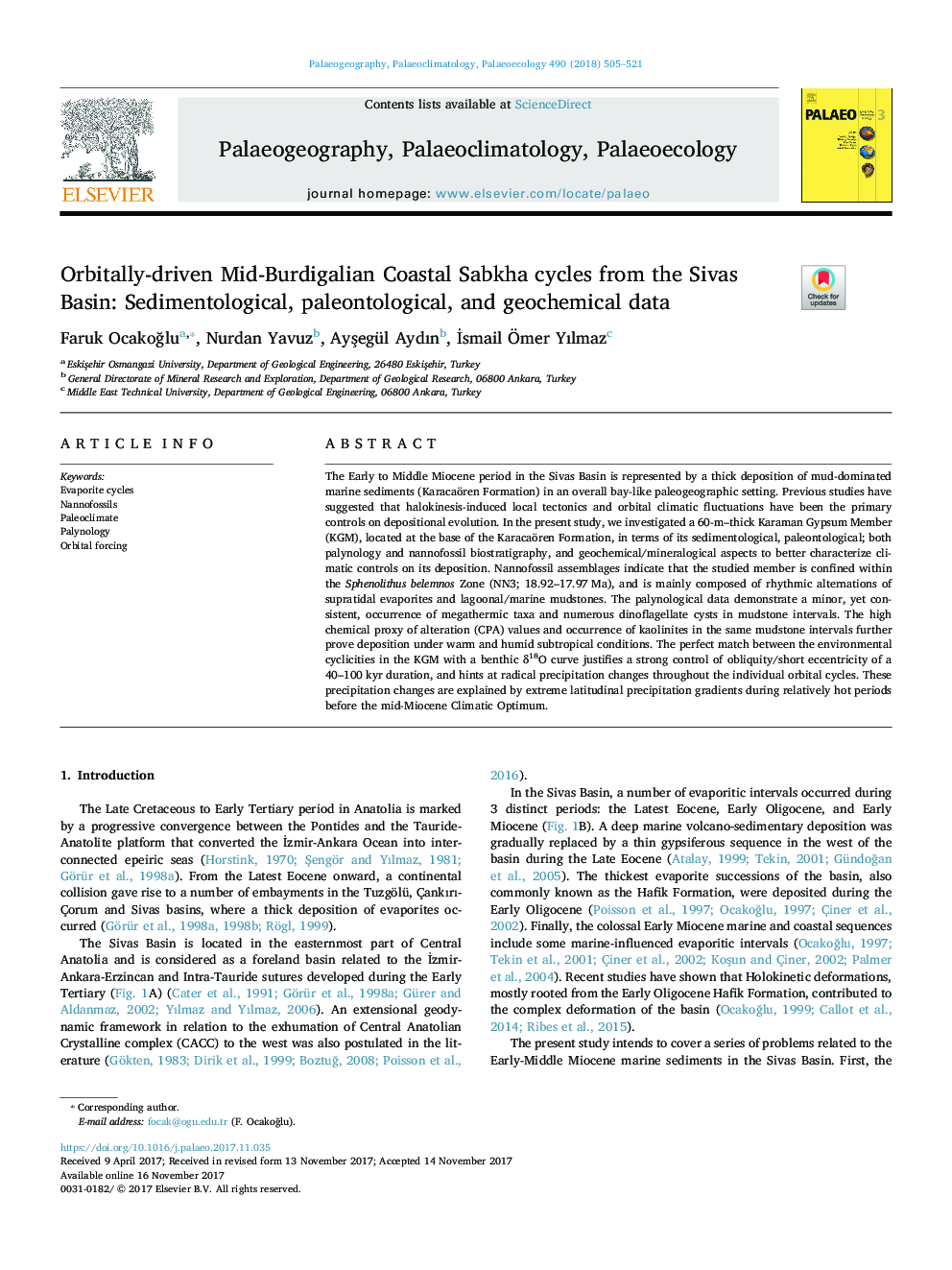| Article ID | Journal | Published Year | Pages | File Type |
|---|---|---|---|---|
| 8868473 | Palaeogeography, Palaeoclimatology, Palaeoecology | 2018 | 17 Pages |
Abstract
The Early to Middle Miocene period in the Sivas Basin is represented by a thick deposition of mud-dominated marine sediments (Karacaören Formation) in an overall bay-like paleogeographic setting. Previous studies have suggested that halokinesis-induced local tectonics and orbital climatic fluctuations have been the primary controls on depositional evolution. In the present study, we investigated a 60-m-thick Karaman Gypsum Member (KGM), located at the base of the Karacaören Formation, in terms of its sedimentological, paleontological; both palynology and nannofossil biostratigraphy, and geochemical/mineralogical aspects to better characterize climatic controls on its deposition. Nannofossil assemblages indicate that the studied member is confined within the Sphenolithus belemnos Zone (NN3; 18.92-17.97 Ma), and is mainly composed of rhythmic alternations of supratidal evaporites and lagoonal/marine mudstones. The palynological data demonstrate a minor, yet consistent, occurrence of megathermic taxa and numerous dinoflagellate cysts in mudstone intervals. The high chemical proxy of alteration (CPA) values and occurrence of kaolinites in the same mudstone intervals further prove deposition under warm and humid subtropical conditions. The perfect match between the environmental cyclicities in the KGM with a benthic δ18O curve justifies a strong control of obliquity/short eccentricity of a 40-100 kyr duration, and hints at radical precipitation changes throughout the individual orbital cycles. These precipitation changes are explained by extreme latitudinal precipitation gradients during relatively hot periods before the mid-Miocene Climatic Optimum.
Related Topics
Physical Sciences and Engineering
Earth and Planetary Sciences
Earth-Surface Processes
Authors
Faruk OcakoÄlu, Nurdan Yavuz, AyÅegül Aydın, Ä°smail Ãmer Yılmaz,
